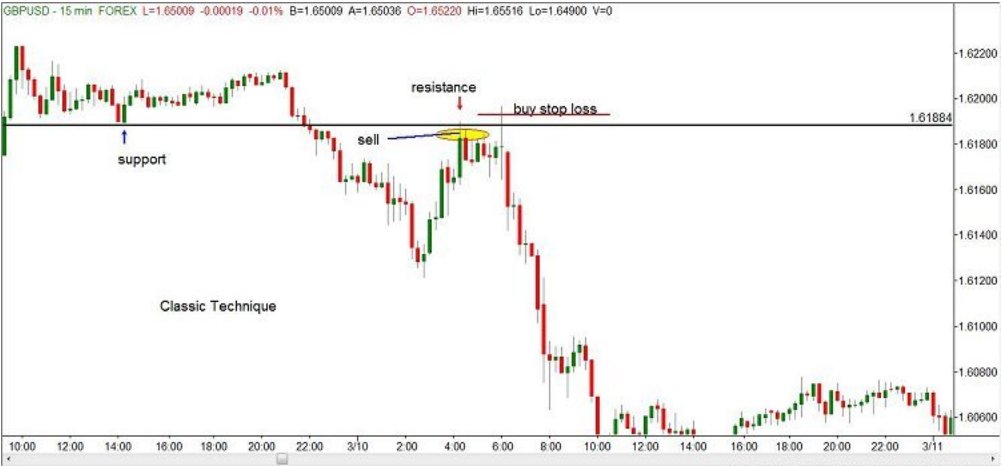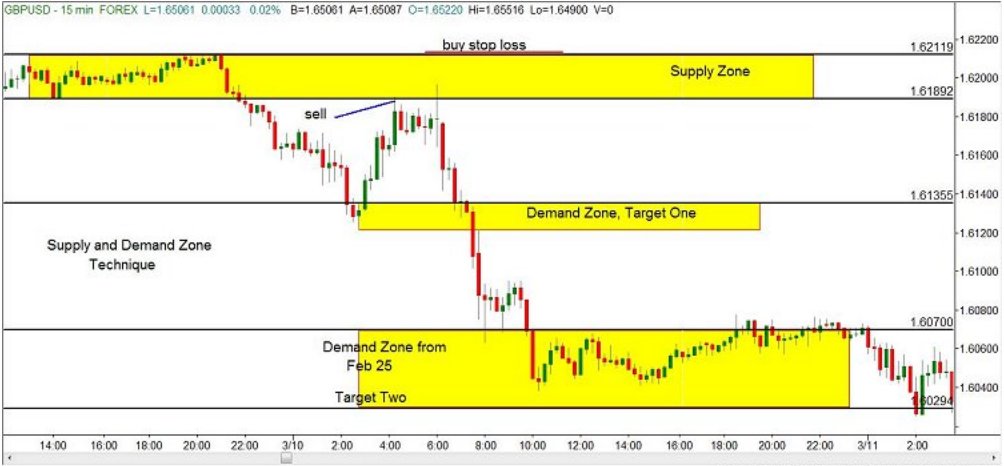In this article I will examine more closely the common belief that those darn Forex brokers are "running" or "hunting" our stop loss orders. First, let's define what this means. Running or hunting stops basically means that you enter a long (short) position with a sell (buy)stop loss a few pips below (above) your entry. The price action then comes to your stop order, takes you out, then the price action immediately reverses direction – often going directly to your first price target! Has anyone had this happen to them before? Do a quick internet search and you will find tens of thousands of references to this.
There are two main problems with this belief. The first is the psychology involved with this belief. Do you REALLY believe that the Forex broker is going after YOUR order? Is your position so important to the Forex broker's profit and loss that they will run the market up or down to take you out so they can book the spread on one more trade today? In every class I teach, this topic comes up and invariably several students chime in with examples of how those brokers "ran" their stops. How large must your ego be to believe that the broker is lying in wait to execute your stop?! Does the trade desk then give each other a bunch of high-fives and cheer that they took you out? Hardly. What more than likely happened is that the price action ran to the HUGE CLUSTER of stop loss orders and then turned. There is plenty of debate out there about this topic including discussions on dealing desks, ECN brokers, etc. Unfortunately, this debate is too long and complicated for this article.
The second problem with having your stop loss order ran is more than likely the fact that you have your stop placed too tightly. Too small of a stop is as bad as too wide of a stop! Many beginning traders think that a 3-5 pip stop is a great idea. Sounds good on paper, I know. But when you consider that spread of 1-4 pips and an Average True Range of 10 pips (for example), these small stops will cause you to have many unnecessary small losses. What I show in every class is the common technique of placing your stop just on the other side of the classic support and resistance lines. Why would I show this? To prove the point that ZONES of supply and demand will be more effective in your trading!
There are two main problems with this belief. The first is the psychology involved with this belief. Do you REALLY believe that the Forex broker is going after YOUR order? Is your position so important to the Forex broker's profit and loss that they will run the market up or down to take you out so they can book the spread on one more trade today? In every class I teach, this topic comes up and invariably several students chime in with examples of how those brokers "ran" their stops. How large must your ego be to believe that the broker is lying in wait to execute your stop?! Does the trade desk then give each other a bunch of high-fives and cheer that they took you out? Hardly. What more than likely happened is that the price action ran to the HUGE CLUSTER of stop loss orders and then turned. There is plenty of debate out there about this topic including discussions on dealing desks, ECN brokers, etc. Unfortunately, this debate is too long and complicated for this article.
The second problem with having your stop loss order ran is more than likely the fact that you have your stop placed too tightly. Too small of a stop is as bad as too wide of a stop! Many beginning traders think that a 3-5 pip stop is a great idea. Sounds good on paper, I know. But when you consider that spread of 1-4 pips and an Average True Range of 10 pips (for example), these small stops will cause you to have many unnecessary small losses. What I show in every class is the common technique of placing your stop just on the other side of the classic support and resistance lines. Why would I show this? To prove the point that ZONES of supply and demand will be more effective in your trading!

Figure 1
Using this example of the GBPUSD on a fifteen minute chart, this trader draws in their support/resistance line just like many trading manuals teach. They enter a short position near the 1.6189 level with a stop a few pips above. How many dozens or hundreds of traders on the planet took the same trade with their stop near the same level? A few candles later all of those buy stop orders got hit.

Figure 2
Using the above supply and demand zones, our second trader is still looking to enter a short trade near the 1.6189 level - however, their stop loss will be placed ABOVE the supply zone defined by the yellow box at approximately 1.6212 and their first target near 1.6135. This gives a risk to reward ratio of over 1:2 (~23 pip stop and ~53 pip target) at only target 1! Looking further back on the chart, we can see a demand zone from Feb 25 of 1.6029-1.6070. This now gives a risk to reward ratio of about 1:5 (~23 pip stop with ~120 pip target)!
So what is the take away on this lesson? Don't use the classic support and resistance levels for your stop losses - if you do, there is a good chance your stop will get "run" like all those traders who use the manuals for their trading techniques. When properly identified, supply and demand zones will help prevent this from happening.
So what is the take away on this lesson? Don't use the classic support and resistance levels for your stop losses - if you do, there is a good chance your stop will get "run" like all those traders who use the manuals for their trading techniques. When properly identified, supply and demand zones will help prevent this from happening.
Last edited by a moderator:
